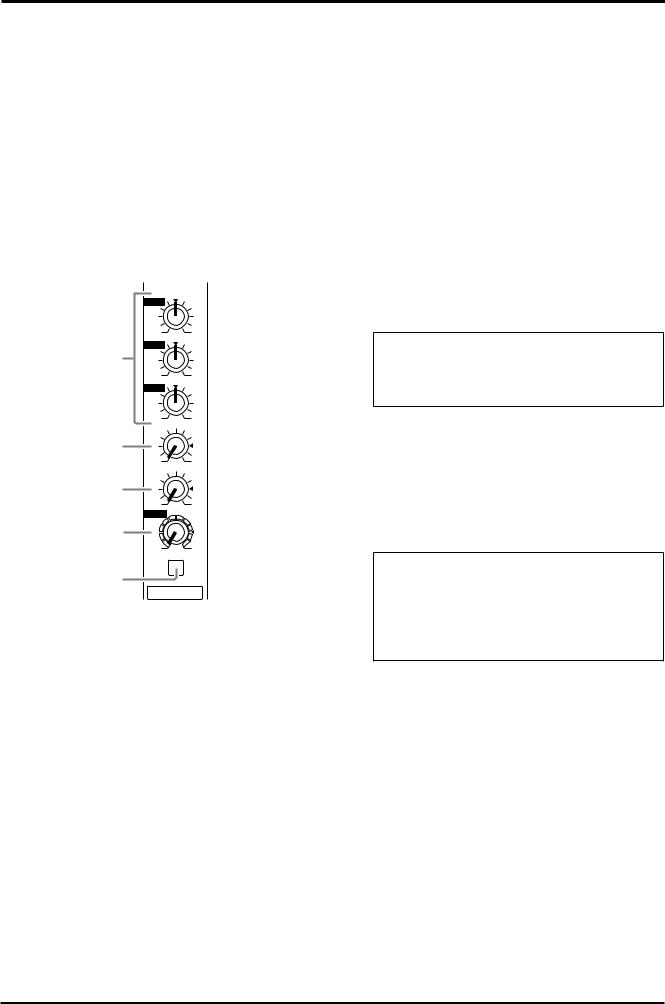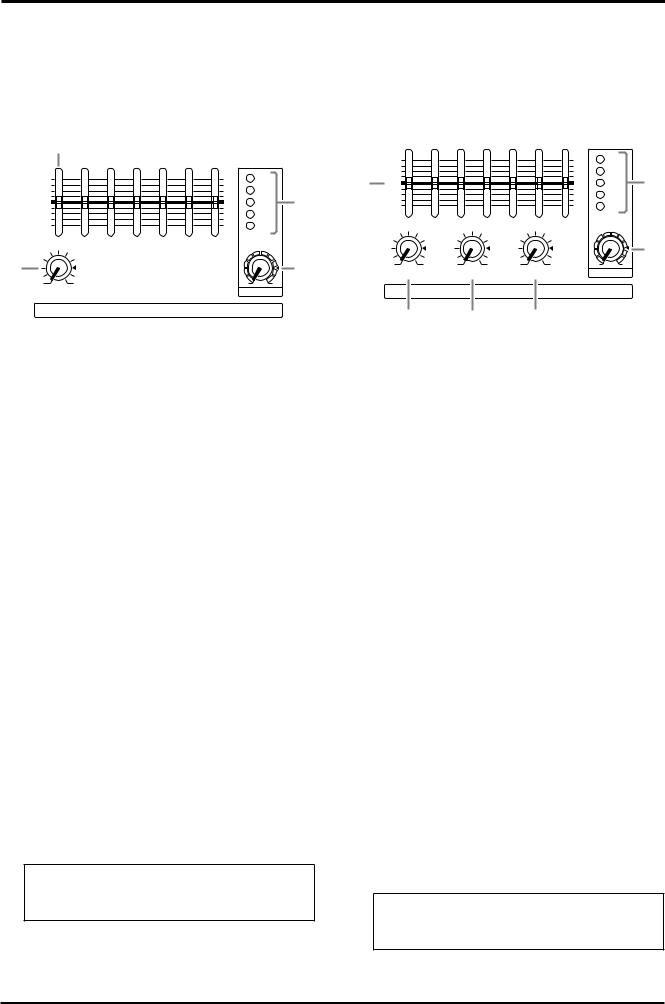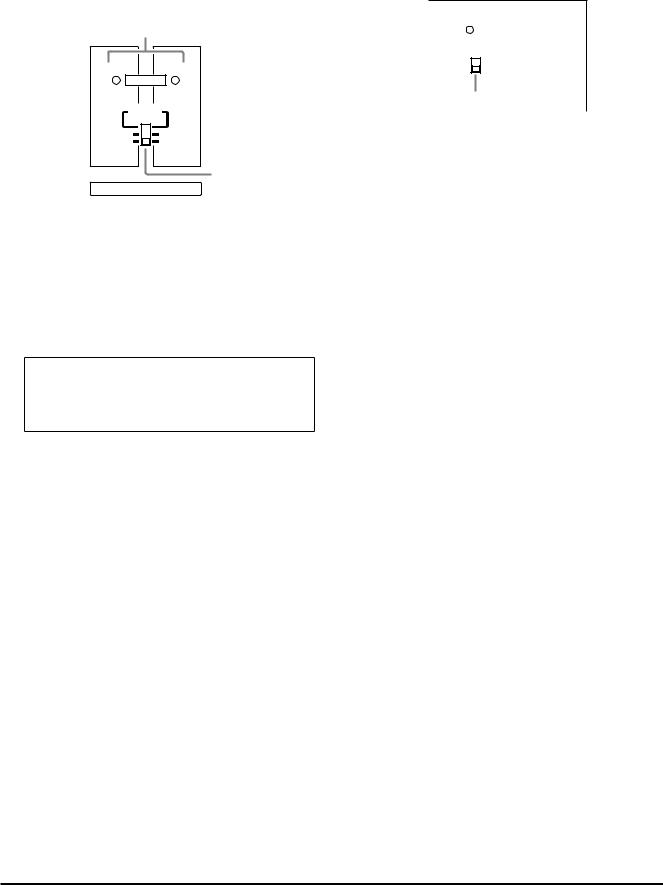Yamaha EMX640 User Manual

POWERED MIXER
Owner’s Manual
Introduction
Thank you for purchasing the Yamaha EMX640 Powered Mixer. The EMX640 has the following features.
In order to take full advantage of the EMX640 and enjoy long and trouble-free performance, please read this owner’s manual carefully, and keep it in a safe place for future reference.
Features
•Six input channels compatible with mic/line signals are provided. The EMX640 has ample power, with a maximum output of 200 W+200 W (400 W with bridge connection), and is suitable for a wide range of applications from installed systems to small-scale PA systems.
•A two-channel power amp is built-in. The input signals for the two channels can be selected as MAIN+MAIN, MAIN+MONITOR, or MAIN (bridge connection).
•Independent 7-band graphic EQ is provided for both the MONITOR section and the MAIN section. This allows the volume and frequency response to be adjusted separately for the main speakers and monitor speakers.
•Two limiter circuits are built-in to prevent excessive input levels to the amp.
•A digital effect with three selectable effect types is built-in. A variety of effects can be applied to add reverberation or ambiance to vocals or instrumental sounds.
Contents |
|
Front and rear panel ............................................ |
2 |
Control panel .......................................................... |
2 |
Input/output panel .................................................. |
6 |
Rear panel .............................................................. |
7 |
Connections ......................................................... |
8 |
Basic Operation ................................................... |
9 |
Connecting microphones and instruments ............ |
9 |
Using the digital effect ............................................ |
9 |
Example setups ................................................. |
10 |
As a conference PA system/installed sound system 10 |
|
As a band PA ........................................................ |
11 |
Specifications ..................................................... |
13 |
General specifications .......................................... |
13 |
Input specifications ............................................... |
14 |
Output specifications ............................................ |
14 |
Dimensions ........................................................... |
15 |
Block and Level diagram ...................................... |
15 |
Precautions
1.Avoid excessive heat, humidity, dust and vibration
Keep the unit away from locations where it is likely to be exposed to high temperatures or humidity — such as near radiators, stoves, etc. Also avoid locations which are subject to excessive dust accumulation or vibration which could cause mechanical damage.
2.Ventilation
Allow a distance of 30 cm between the unit and the wall so that heat generated from the unit will be released effectively. Also, allow enough space between the unit and other devices. If you mount the unit in an audio rack, keep a space of 40 cm on the top panel, and a space of 15 cm to the side panel. Remove the rear panel of the rack or open a vent hole. If heat release is inadequate, the unit will retain heat inside the unit, which may cause a fire.
3.Avoid physical shocks
Strong physical shocks to the unit can cause damage. Handle it with care.
4.Do not open the case or attempt repairs or modifications yourself
This product contains no user-serviceable parts. Refer all
maintenance to qualified Yamaha service personnel. Opening the case and/or tampering with the internal circuitry voids the warranty.
5.Always power off before making connections
Always turn the power OFF before connecting or disconnecting cables. This is important to prevent damage to the unit itself as well as other connected equipment.
6.Handle cables carefully
Always plug and unplug cables — including the AC power cord — by gripping the connector, not the cord.
7.Clean with a soft dry cloth
Never use solvents such as benzine or thinner to clean the unit. Wipe clean with a soft, dry cloth.
8.Always use the correct power supply
Make sure that the power supply voltage specified on the rear panel matches your local AC mains supply. Also make sure that the AC mains supply can deliver more than enough current to handle all equipment used in your system.
9.Do not touch the heatsink when the EMX640 is in use. It can get very hot.
E

2 Front and rear panel
Front and rear panel
Control panel
■ Channel section
In this section, you can adjust equalization (frequency response), volume level, effect and monitor output levels for the input signal of each channel.
1
HIGH
–15 |
+15 |
MID
1
–15 |
+15 |
LOW
–15 |
+15 |
MONI
2
0 |
10 |
EFFECT
3
0 |
10 |
LEVEL
4
0 |
10 |
PAD
5
1
1Equalizer controls (HIGH, MID, LOW)
This is a 3-band equalizer that adjusts the high frequency range, mid frequency range, and low frequency range of each channel. Response is flat when the knobs are in the ▼ position. Rotating it toward the right will boost the corresponding frequency band, and rotating it toward the left will cut it.
The base frequency (or center frequency), range of boost or cut, and equalizer type of each band are as follows.
HIGH: |
12 kHz |
± 15 dB |
shelving type |
MID: |
2.5 kHz |
± 15 dB |
peaking type |
LOW: |
80 Hz |
± 15 dB |
shelving type |
2Monitor controls (MONI)
For each channel, this controls the amount of signal that is sent to the MONITOR bus.
The signal of the MONITOR bus is sent to the speakers connected to the POWER AMP 2 A/B jacks (only if the power amp select switch is in the MAIN+MONITOR position) and to the MONITOR jacks (input/output panel 6).
Note: The signal is sent to the MONITOR bus from a location before the level control (4) of each channel. This means that it will not be affected by the setting of the LEVEL control.
3Effect control (EFFECT)
For each channel, this controls the amount of signal that is sent to the EFFECT bus.
The signal of the EFFECT bus passes through the EFFECT section and the built-in effect, and is sent to the external effect device connected to the EFFECT OUT jacks (input/output panel 3).
Note: The signal is sent to the EFFECT bus from a location after the level control (4) of each channel. This means that the amount of signal that is sent to the EFFECT bus will be affected not only by the setting of the effect control, but also by the setting of the level control.
4Level control (LEVEL)
This adjusts the output level for each channel.
5Pad switch (PAD) (1~4 only)
This switch attenuates the input signal by 30 dB. When connecting a line level device to channels 1~4, or if the mic input is distorted, turn this switch on (the pressed-in position).
EMX640—Owner’s Manual

Control panel |
3 |
■ DIGITAL EFFECT section
This section allows you to turn the built-in digital effect on/off and to select the effect type.
VOCAL |
|
L HALL |
6 |
S HALL |
|
ON 7
DIGITAL
EFFECT
6Effect select switch
Select the effect type for the built-in digital effect.
7DIGITAL EFFECT ON switch
When this switch is on (pressed), the digital effect built into the EMX640 can be used. In that case, the signal processed by the digital effect will be sent to the MAIN/MONITOR bus. The mix level of the effect sound is adjusted by the EFFECT RTN control of the MAIN and MONITOR sections.
■ EFFECT section
This section allows you to adjust the level of the signal sent from the EFFECT bus to an external effect device.

 8
8
EFFECT OUT
EFFECT
8EFFECT OUT control
This adjusts the effect send level for an external effect device connected to the EFFECT OUT jack (input/output panel 3).
Note: The EFFECT OUT control does not affect the send level to the built-in effect.
EMX640—Owner’s Manual

4 Front and rear panel
■ MONITOR section
This section allows you to adjust the tone and volume of the MONITOR bus, and specify the mix level of the built-in effect.
9
+12 |
|
|
|
|
|
+12 |
+6 |
|
• |
|
|
|
|
|
• |
+3 |
|
6 |
|
|
|
|
|
6 |
|
|
• |
|
|
|
|
|
• |
0 |
B |
• |
|
|
|
|
|
• |
||
0 |
|
|
|
|
|
0 |
|
|
6 |
|
|
|
|
|
6 |
–5 |
|
• |
|
|
|
|
|
• |
–10 |
|
–12 |
|
|
|
|
|
–12 |
|
|
125 |
250 |
500 |
1k |
2k |
4k |
8k |
|
|
0 |
|
|
|
|
|
|
|
A |
EFFECT RTN |
|
|
|
|
|
MASTER |
|
|
MONITOR
9Graphic equalizer
This is a 7-band graphic equalizer that allows you
to adjust the frequency response of the MONITOR bus signal, providing a maximum of ± 12 dB of cut/boost for each frequency band. You can use these sliders to reduce the level of frequency bands at which feedback easily occurs. Frequency response is flat when a slider is in the center position. Moving a slider in the positive direction will boost, and in the negative direction will cut.
This graphic equalizer affects both the MONITOR bus signal that is output to the speakers and the line level signal which is output from the MONITOR jack (input/output panel 6).
0EFFECT RTN control
This controls the level of the effect sound which is returned from the built-in digital effect to the MONITOR bus.
AMASTER control
This adjusts the final level of the MONITOR bus. It affects both the MONITOR bus signal which is output to the speakers and the line level signal which is output to the MONITOR jack (input/ output panel 6).
BPeak level indicator
This indicator allows you to monitor the level of the signal which is output from the MONITOR jack (input/output panel 6).
Note: To avoid distortion, adjust the MASTER control (A) so that the 0 indicator lights occasionally.
■ MAIN section
This section allows you to adjust the tone and volume of the MAIN bus, the mix level of the built-in effect, and the mix level of the external input.
|
+12 |
|
|
|
|
|
+12 |
+6 |
|
|
• |
|
|
|
|
|
• |
+3 |
|
|
6 |
|
|
|
|
|
6 |
|
|
C |
• |
|
|
|
|
|
• |
0 |
H |
• |
|
|
|
|
|
• |
|||
|
0 |
|
|
|
|
|
0 |
|
|
|
6 |
|
|
|
|
|
6 |
–5 |
|
|
• |
|
|
|
|
|
• |
–10 |
|
|
–12 |
|
|
|
|
|
–12 |
|
|
|
125 |
250 |
500 |
1k |
2k |
4k |
8k |
|
|
|
|
|
|
|
|
|
|
|
G |
|
EFFECT RTN |
AUX IN |
|
TAPE IN |
|
MASTER |
|
||
MAIN
D E F
CGraphic equalizer
This is a 7-band graphic equalizer that allows you
to adjust the frequency response of the MAIN bus signal, providing a maximum of ± 12 dB of cut/boost for each frequency band.
This graphic equalizer affects both the MAIN bus signal that is output to the speakers and the line level signal which is output from the MAIN jack (input/output panel 6).
DEFFECT RTN control
This adjusts the level of the effect signal which is returned from the built-in digital effect to the MAIN bus.
EAUX IN control
This adjusts the amount of signal that is sent from the AUX IN jack to the MAIN bus.
FTAPE IN
This adjusts the amount of signal that is sent from the TAPE IN jacks to the MAIN bus.
GMASTER control
This adjusts the final level of the MAIN bus. It affects both the MAIN bus signal which is output from the speakers, and the line level signal which is output from the MAIN jack (input/output panel 6).
HPeak level indicator
This indicator allows you to monitor the level of the signal which is output from the MAIN jack (input/output panel 6).
Note: To avoid distortion, adjust the MASTER control (G) so that the 0 indicator lights occasionally.
EMX640—Owner’s Manual

Control panel |
5 |
■ POWER AMP section
This section allows you to select the signals that will be output from the built-in two-channel power amplifier, and to select the BRIDGE mode.
I
1 2
LIMITER
MAIN
BRIDGE
MAIN |
MAIN |
MAIN |
MONITOR |
J
POWER AMP
ILIMITER indicator
This indicator lights up when the level of the signal output from the power amp section reaches the maximum and the limiter is activated. Adjust appropriate control so that the indicator lights up for only a short while when the signal reaches the maximum level.
Note: The indicator lights up or flashes for a longer duration if the power amp section is significantly overloaded, which could result in malfunction. Avoid such a situation.
JPower amp select switch
Select one of the following three settings to specify the signals that will be output from power amp 1/2.
•MAIN-MONITOR
With this setting, the MAIN and MONITOR sections can be used independently. The MAIN bus signal will be output from the POWER AMP 1 A/ B jacks, and the MONITOR bus signal will be output from the POWER AMP 2 A/B jacks.
•MAIN-MAIN
With this setting, the two power amp channels can be used independently. The MAIN bus signal will be output from the POWER AMP 1 A/B jacks and from the POWER AMP 2 A/B jacks.
•MAIN BRIDGE
With this setting, the two power amp channels (A and B) will be bridge connected. Only the MAIN bus signal will be output from the BRIDGE jack, though.
■ POWER indicator & PHANTOM switch
K POWER
POWER
ON
PHANTOM +48V
OFF
L
KPOWER indicator
This indicator will light when the power of the EMX640 is turned on.
LPHANTOM +48 V switch
This switch turns the phantom power supply on/ off for the Lo-Z input jacks of channels 1~4 and MIC input jacks of channels 5~6.
EMX640—Owner’s Manual
